TR’s 10 Best Manga of 2013
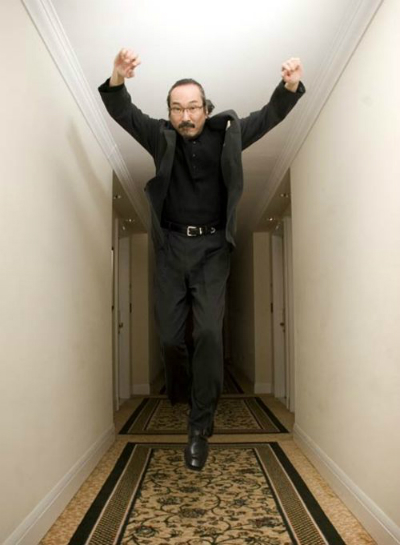 |
| Satoshi Kon, by Jennie Warren, LA Weekly |
You know, I don’t usually do annual lists like these. Something about breaking up a year of great media into a formula weirds me out. But Luke asked me nicely for my take on manga in 2013, and I think it’s worth taking a look at the spread of excellent new and ongoing fare that’s hit shelves and tablets this past year. Both manga and anime are staging something of a comeback from a low period, with a variety of great stuff on TV, in bookstores, and available online. The manga boom of the early 2000s gave way to a chilling bust, but the industry is starting to shake that funk off and produce some sustained hits and important works. Let’s look at my picks for ten of the best.
10) Tropic of the Sea by Satoshi Kon
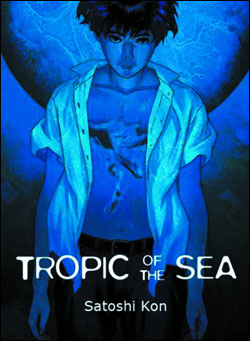 |
You’re reading that correctly – Satoshi Kon, the late, great director of anime masterpieces like Millennium Actress and Perfect Blue also found time to draw manga. In fact, he established himself as a manga artist before breaking big in the anime business, and this single volume tale is one of his earliest works. A lot of the stuff we’ve grown to love about his films is here: his attention to detail, his bracingly realistic character artwork, and the moral complexity of his storytelling all manifest themselves.
Like Kon’s animation, Tropic of the Sea is a story that operates on many levels – in some ways, it’s about the inevitable clash between generations, as an idealistic young man butts head with his pragmatic father. In other ways, it’s about coming home to a sleepy seaside town after years spent living away; it’s about the inexorable, greedy march of progress. And it’s about mystery, about the tantalizing silhouette of a mermaid that binds all of these elements together. Tropic of the Sea is no masterpiece, but it’s an immensely valuable and fascinating look at how one of the anime medium’s masters developed his narrative style.
9) Fort of Apocalypse by Yuu Kuraishi and Kazu Inabe
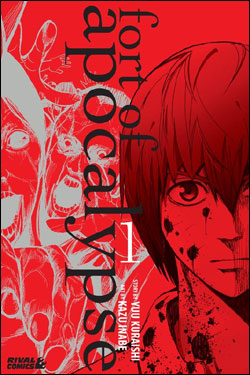 |
Zombies are still red-hot business, so it’s no surprise that zombie manga, from High School of the Dead to Sankarea, is all the rage, right along with The Walking Dead and World War Z. If you ask me, the absolute best zombie manga going is Kengo Hanazawa’s savage, brutally funny I Am a Hero – but with no publishing deal in English, my fallback option is Kuraishi and Inabe’s Fort of Apocalypse. The story here starts with the usual building block – society’s swift, calamitous collapse in the face of a zombie outbreak – but sets it at a closed-off juvenile prison camp. Protagonist Yoshiaki Maeda has been falsely accused and locked up, but quickly falls in with an enjoyably stereotypical trio of evil geniuses. They’re charged by the psychotic de-facto leader of the facility with securing weapons, and make their way out into the ruined world.
What ensues is part Dawn of the Dead, part Lord of the Flies, and part Left 4 Dead. Despite the common zombie story elements, Fort of Apocalypse is a relatively fresh take on zombies, with multiple weird types all doing the bidding of an otherworldly “master key” zombie, who pursues the protagonist relentlessly across Japan. When the zombies aren’t in pursuit, Maeda and his pals have to deal with killers at the school, plus a U.N-backed military force with deeply questionable motivations. A page turner that leaves me hungry for every rotten chapter, Fort of Apocalypse isn’t yet available in book form – you can read it by visiting Crunchyroll.com‘s new manga section, which works like a charm on phones and tablets as well as PCs. Check it out!
8) Saturn Apartments by Hisae Iwaoka
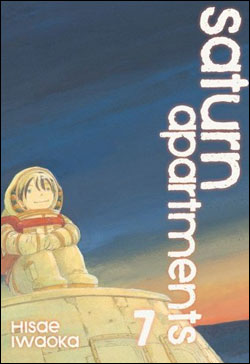 |
Here’s a title that’s slowly but surely been climbing up my own personal charts since it started publication in English in 2010. But Saturn Apartments wrapped up this year, so let’s lavish a little praise on it. I’d put Saturn Apartments in the same category as fare like Kou Yagunima’s Twin Spica, a story that takes some surprising and forward-looking settings and populates them with realistic, sympathetic characters. In this case, we’ve got kind of a stunningly weird concept-in the future, planet earth is declared a national park. Mankind constructs and retreats to a gigantic, stratospheric ring hanging 35 kilometers above the earth’s surface. This new society is heavily stratified, however: while the great and the good occupy the top of the ring, and the middle levels are dedicated to vast gardens and educating the population, the working class reside and work on the drab, stifling lowest levels of the ring.
Mitsu is one such worker, thrust into a tough job as a stratospheric window-washer after his father perishes in the same profession. With little time for personal growth and reflection, Mitsu is forced by circumstances to join the workforce right after junior high-the kid sets to work, learning the job, getting to know his peers and clientele, and quietly searching for answers surrounding his father’s death. Iwaoka’s delicate linework sometimes comes off like a slightly more realistic Mobius-in particular, her sweeping depictions of the lower level exteriors, where Mitsu can see both the earth and the sky, are breathtaking. Her exploration of Saturn Apartments‘ quirky society is always interesting, and while Mitsu has that all-too-typical flawless shonen hero vibe, he’s set apart by his willingness to reach out to all his clients, even the rich asshole ones. An omnibus release of this 7-volume wonder wouldn’t be unwelcome.
7) Ten-Cent Manga by Shigeru Sugiura and Osamu Tezuka
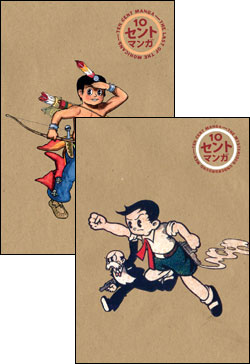 |
Manga’s been a pretty big deal for a long time. But in the wake of World War II, Japan had some unique problems getting manga to the public-paper was too damn expensive to allow for cheap, widely-available mass printing. Still, the people hungered for manga, and so the concept of manga rental houses was born. This led to two important developments: wider availability of manga, and the opportunity for artists to create stories beyond the common gag-based manga that had existed previously. A young man named Osamu Tezuka seized on this opportunity, rocketing to fame on the back of a book called New Treasure Island. Not long after this, Tezuka would publish his first 100% solo work: The Mysterious Underground Men, the story of a boy genius inventor and his talking bunny pal, who thwart the attempts of a malevolent subterranean kingdom to destroy the surface. This single volume is rough as hell, one of the famed God of Manga’s earliest professional works. Still, it’s great fun, fascinating from a historical perspective, and packed with engrossing liner notes.
Sugiura’s Last of the Mohicans is a little bit more straightforward; a streamlined adaptation of James Fenimore Cooper’s famous novel. Still, it’s neat to see Sugiura’s rugged-yet-babyfaced versions of Nathaniel Bumppo and Uncas, as they match wits with colonial forces and a legion of Huron warriors, led by the fearsome and cunning Magua. 2013’s kind of been the year of Tezuka, with fare like Unico and Message to Adolf dropping from multiple publishers, but it’s just as important to get other seminal works out there. These two editions, from Picture Box Books, are beautiful stuff, exactly what classic manga reprints should be. Unfortunately the publisher is winding things down, so get ’em while they’re still in print!
6) Heart of Thomas by Moto Hagio
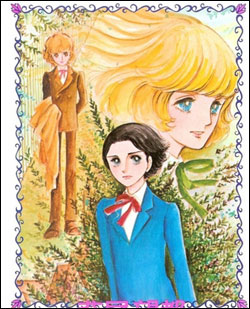 |
I think that, on a purely visual level, Moto Hagio might be the finest manga artist ever. Almost every panel of work I’ve seen by her is like a tiny masterpiece of linework and composition and draftsmanship. Unfortunately, she doesn’t have a lot of work available in English – her science fiction-writing peer Keiko Takemiya has the edge there. But in 2010, shoujo manga expert Matt Thorn brought together A Drunken Dream and Other Stories, an anthology of the artist’s best short works. Heart of Thomas is the publisher’s follow-up, a wistful and spellbinding tale of forbidden love at a boarding school in Germany.
Yeah, Hagio is definitely trading in shoujo aesthetics here, all awash in characters exchanging searching looks and sun-drenched pivotal moments. Heart of Thomas is also one of the earliest examples of shonen-ai, a tale of sometimes weirdly platonic love between boys, spun for the benefit of Hagio’s largely female audience in the ’70s. But the story, concerning a boy named Juli who must come to terms with his feelings for a tragically lost classmate, really hits the mark, a period piece full of poignant moments. I also have to laud Fantagraphics, who present this rich and vivid story in a beautiful single hardcover volume. I’m hoping this leads to more vintage shoujo manga!
5) Watamote by Nico Tanigawa
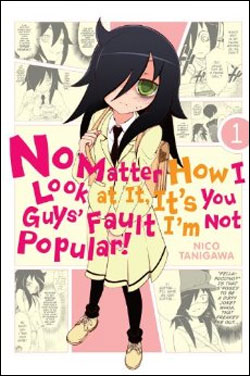 |
The true spirit of this comedy manga can be summed up by its full title: No Matter How I Look at It, It’s You Guys’ Fault I’m Not Popular! Take the Japanese reading of that sentence, mash it down to 4 syllables, and you’ve got Watamote. Most manga tales of high school are upbeat sitcoms, with fun adventures and tantalizing romance evenly mixed in with more typical stories of the absurd perdition of school life, in which most people just try to get through the day without suffering complete humiliation. But Watamote shifts the formula by doing away with all that positive stuff, and focusing entirely on awkwardness instead.
Tomoko Kuroki is charmingly awful. a pint-sized, slouching, mumbling manga version of Ignatius P. Reilly. An off-season of dating sim games has Tomoko convinced that she’s got high school life all figured out, but in the end she’s thwarted by her odd hobbies, questionable hygiene, and utter inability to even talk to her peers. As the school year progresses, Tomoko’s vulgar internal monologue gets meaner and meaner, despite the occasional hollow victory. (A boy in art class drew a cute picture of her! Nope, turns out he draws every single person that way.) And that’s the magic of Watamote-it’s fun to watch Tomoko’s floundering, gormless attempts to interact with society, but the two-person tandem Nico Tanigawa wisely prevents their heroine from becoming too likeable, lest the audience start rooting for her. We can’t have that! Watamote is manga’s answer to Welcome to the Dollhouse.
4) Attack on Titan by Hajime Isamaya
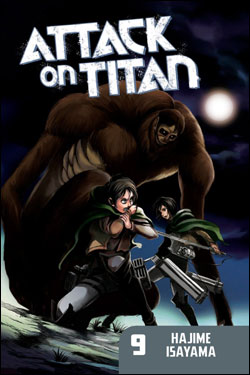 |
Here’s the hottest title on the list: Attack on Titan is not just a manga and anime hit, but a raging phenomenon, a budding franchise that’s launched toys, apparel, video games, tie-in novels, and an in-development feature film. But there’s a damn good reason why otaku across the globe are singing Attack on Titan‘s praises – it’s well-crafted, full of gripping adventures and magnetic characters. More than that, it mixes the original and the familiar brilliantly – we’ve seen plenty of stories of gifted teenagers fighting off apocalyptic destruction while grappling with their doomed romances, but Isamaya’s scenario is rare and brutal.
In Attack on Titan‘s pre-industrial world, our heroes aren’t invaded and hounded by aliens from Titan (am I the only one that jumped to that conclusion when I saw the title?), but by towering, nightmarishly distorted humanoids, who chase down and eat their prey alive. But the Titans are almost impossible to engage due to their size, and difficult to destroy. More than that, they’re chillingly unintelligent, a sea of vacantly staring giants that behave more like a gruesome, collective natural disaster than an army of malevolent invaders. Our hero, Eren, is driven not by a sense of justice or duty, but by revenge, and while his companions fight the titans with 3D Maneuver Gear, an ingenious, precarious system of gas-fired grappling hooks and powerful swords, Eren’s power is greater still.
The Attack on Titan manga’s story is ongoing, blazing out ahead of the excellent TV anime series. In its most recent volumes, it explores the society of AoT‘s world, the mysteries of the Titans, and the relentlessly lethal situations that Eren and his companions find themselves in. There’s just one black mark against Attack on Titan that I can’t figure out: its artwork. The series is run through with Isamaya’s rude, primal, and often nakedly terrible draftsmanship, and it’s off-putting sometimes. But if you want to get in on the ground floor of anime and manga’s global resurgence, look no farther than Attack on Titan.
3) Helter Skelter: Fashion Unfriendly by Kyoko Okazaki
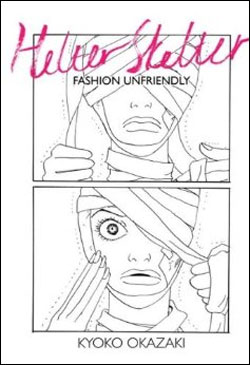 |
Celebrity life is raw, ugly, and weird, a minefield of terrible compromises, out-of-control vanity, failed romance, and self-destruction. I don’t think I’ve ever read a more pointed critique of the terrible cost of fame than Kyoko Okazaki’s Helter Skelter, which depicts the life of jet-setting fashion model and actress Liliko. Liliko is rich, famous, and sought-after-but to achieve that fame, she’s had to endure punishing diets, invasive plastic surgeries, and expensive cosmetic treatments. She’s terribly and completely beholden to her talent agency. She has no real friends, and relies on her hapless personal assistants for stimulation. Worst of all, she knows damn well that her time in the spotlight is terrifyingly fragile – her body isn’t going to stand up to the cost of fame forever, and her ruthless boss, herself a former model, is already grooming a replacement.
Sounds glamorous, huh? But at times, Okazaki depicts that glamour, the intense and intoxicating triumph that Liliko feels. She just juxtaposes it with equally intense failure and paranoia, as Liliko’s fleeting fame slowly disintegrates around her. Helter Skelter is ostensibly josei manga, comics for teenaged and adult women, but you’ll see none of the genre’s flowery and stylized artwork here – Okazaki’s style is cute, but spartan. An auto accident has left the artist injured and unlikely to return to the field soon, which is a shame. In the meantime, we’ll have Helter Skelter to tide us over.
2) Vinland Saga by Makoto Yukimura
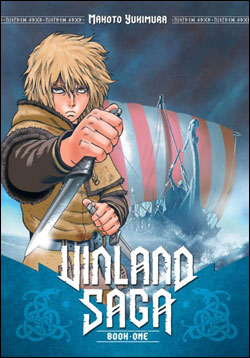 |
Planetes was one of the finest manga releases of the 2000s, a story of a young couple’s struggle against adversity backed by a tantalizingly realistic scenario of commonplace space travel, where humans commuted back and forth to the moon and interplanetary garbage men were needed. Needless to say, it was something of a surprise when the author followed this wonderful piece of speculative fiction with historical fiction – historical fiction about Vikings!
But Yukimura’s attention to detail and flawless characterization are in full flower here. He sets his adventure against the it-really-happened backdrop of the Danish conquest of England in the 11th century, focusing on a charismatic Viking captain named Askeladd and his charge, the dour, revenge-driven Thorfinn. Askeladd’s band are warriors for hire, and at various times find themselves squaring off against Franks, Saxons, and even fellow Vikings. But eventually, the band of fighters comes into service of Cnut, the Danish price who’d eventually rise to the throne of England, Norway, and the entire North Sea empire. The result is fast-paced, relentlessly intriguing stuff, a thrill-a-minute historical adventure that you simply won’t be able to put down. After what’s felt like an eternity of waiting, Kodansha Comics are finally publishing this great work in English. Read it without delay!
1) One Punch Man by ONE and Yusuke Murata
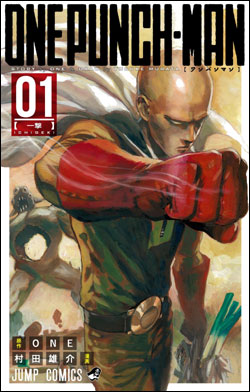 |
Let me be as direct as possible: One Punch Man isn’t merely the best manga of 2013, it’s the best comic of 2013, period. I don’t shy away from other comics – I’ve been loving Vaughn and Staples’ Saga, for example – but here’s a series that fearlessly marries both superhero and shonen manga elements,with a deeply wry sense of self-awareness. One Punch Man began life as a webcomic by the writer and artist ONE, but quickly became so popular that it was snapped up by Shonen Jump, who have published a new edition illustrated by Yusuke Murata. The concept is simple: what if, in a world full of superheroes that rank anywhere from cosmic-powered to shlubs in spandex, one hero emerged with the power to vanquish any foe with a single punch? And what if that incomparably mighty hero were a boring, nerdy guy from the suburbs? Man, what a stupid idea that’d be! Ain’t it great?
One Punch Man and its hero, Saitama, are full of wonderful surprises, inspired multi-page action spreads, and completely whacked-out comedy (one of the city-smashing villains that Saitama pounds into submission incurs the hero’s wrath by preventing him from shopping on Double Coupon Day). The series is reminiscent at times of Edlund’s The Tick, but with so much more to offer. What makes the titular hero interesting is just how lame and awkward he is – it’s never a question of whether or not he’ll win; that’s spelled out right in the title – but how he gets there. One Punch Man runs digitally as part of Shonen Jump, which is a fabulous deal for people with tablets and/or lots of free time on the train to work. I look forward to it more than any comic I read; it’s so magical that it even makes Mondays wonderful.
So: there’s my top 10 for 2013. I’ll admit that it’s not a perfect, well-rounded list-I feel kinda bad for leaving publisher Dark Horse out of the mix, but they didn’t manage to publish a volume of their fabulous, frustratingly unpopular Kurosagi Corpse Delivery Service this year. I’ll also say that current shoujo and josei manga is something of a blind spot of mine. I’ve loved the works of Ai Yazawa, but aside from bold works like those of Okazaki and Moyoco Anno, I don’t range far afield. What do you think I’ve missed, readers?
Previously by Mike Toole:
Ten Crazy Korean Cartoon RIpoffs
Nine Celebrities Who You Probably Didn’t Know Voiced Anime Before Princess Mononoke
Ten Crazy Things from the Original ’70s Gatchaman Cartoon We Hope to See in the New Movie
